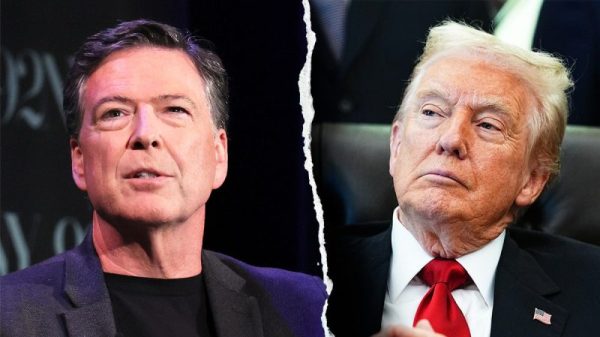Some critics of the Federal Reserve argue that central bankers manipulate the market whenever they adjust interest rates. For example, in an article in the Wall Street Journal, monetary economist Judy Shelton writes, “When the Fed tightens by raising interest rates, its goal is to increase borrowing costs.” She contends that the Fed’s approach is mistaken: “Interest rates shouldn’t be used to depress economic activity, but rather be allowed to signal where best to pursue it.” While Shelton’s view of letting the market determine interest rates is intuitively appealing, it represents a fundamental misunderstanding of monetary policy.
To understand the source of this misunderstanding, we must distinguish between three interest rates: the nominal (market) rate, the real (inflation-adjusted) rate, and the natural rate.
The real rate is the difference between the nominal rate and the inflation rate. For example, suppose the nominal rate is four percent and the inflation rate is two percent. In this case, the real rate will be two percent.
The natural rate, on the other hand, coordinates the intertemporal structure of consumption and production, allocating scarce resources between current and future uses. It depends on people’s willingness to save and the demand for productive resources. When these factors vary, so too does the natural rate.
Because the natural rate is a non-monetary phenomenon, it is generally outside the Fed’s control. By contrast, the Fed can influence the real rate by producing more or less inflation than people expect. If the nominal rate is four percent and the public expects one-percent inflation, but the Fed produces two-percent inflation, the expected real rate will be three percent but the actual real rate will be two percent.
As long as the Fed conducts monetary policy to ensure that the real and natural rates closely track one another, the monetary system will generally not be a source of economic instability. However, when the Fed’s actions drive a wedge between these two rates, the central bank can become a source of economic instability, and the consequences can be severe.
Suppose Congress increases government spending and finances the additional expenditures by issuing new debt. The rise in deficit spending increases the demand for loanable funds, increasing the natural rate. Whether the real rate rises depends on how the Fed responds.
Let us assume the Fed targets the federal funds rate and does not raise its target rate in response to the rise in deficit spending. In this case, the Fed must inject additional reserves into the banking system to maintain its current target rate, offsetting the greater demand for federal funds caused by the increase in deficit spending.
By not allowing its target rate to rise, the Fed essentially holds the real rate below the natural rate. As a result, the money supply will expand, and total dollar spending, including consumption and investment, will increase.
Suppose the prices of finished goods and services rise faster than wages and other input prices. In that case, the rise in total dollar spending will exceed the economy’s productive capacity, eventually leading to higher inflation.
By not adjusting its target rate, the Fed has manipulated the market, destabilizing the economy and monetizing a portion of the newly issued debt.
Suppose instead that a pandemic reduces productivity, resulting in a lower natural rate. As before, let us assume the Fed “does nothing,” keeping its target rate constant. Doing so requires the Fed to remove reserves from the banking system to offset the reduced demand for federal funds.
In this case, the Fed essentially holds the real rate above the natural rate. Consequently, the money supply falls, reducing total dollar spending. Suppose wages and other input prices do not fall as fast as output prices. In that case, total dollar spending falls below the economy’s productive capacity, causing higher unemployment and, potentially, a recession.
Contrary to what many critics of the Fed think, when the Fed fails to adjust its target rate in response to changes in the natural rate, the central bank manipulates the market. By contrast, adjusting its target rate in response to changes in the natural rate reduces the likelihood that the monetary system becomes a source of economic instability.
These critics may argue that such a central coordinating mechanism is unnecessary, but under a fiat standard, responsibility for managing inflation expectations lies with the monetary authorities. As such, the need for a central coordinating mechanism is unavoidable. If the Fed fails to adjust the target rate when the natural rate changes, it is essentially producing more or less inflation than people expect, which, in practice, amounts to interest-rate manipulation.
To be sure, the Fed has frequently pursued policies inconsistent with monetary stability by holding the real rate above or below the natural rate. For example, the Fed famously held the real rate above the natural rate in the late 1920s and early 1930s to pop what the monetary authorities believed was a speculative bubble in the stock market, leading to the Great Depression. The Fed made a similar mistake in 2008, when it failed to cut its target rate despite the natural rate declining, again leading to disastrous consequences.
The point is that the Fed is not necessarily manipulating markets by adjusting its target rate. Indeed, failing to adjust its target rate may be more manipulative than adjusting the target rate in response to changes in the natural rate. We cannot just look at the Fed’s target rate to determine whether it is manipulating the market. We must consider its target rate relative to the natural rate.
The Fed’s track record leaves much to be desired. The solution, however, is not for the Fed to “do nothing,” as that is impossible in a fiat system: even inaction can be manipulation. Instead, the solution lies in institution reforms that promote monetary stability by ensuring the real rate tracks the natural rate as closely as possible.




































